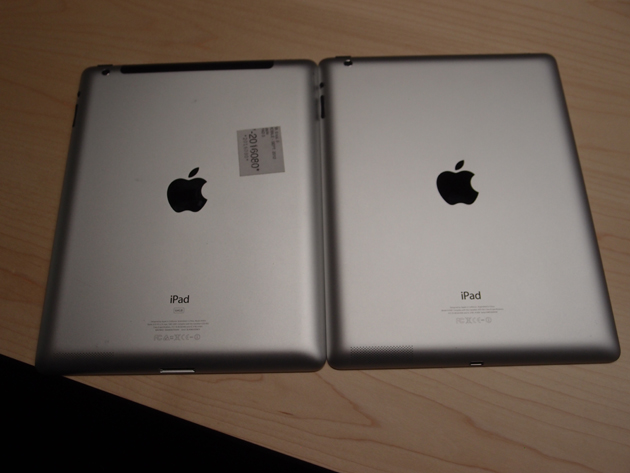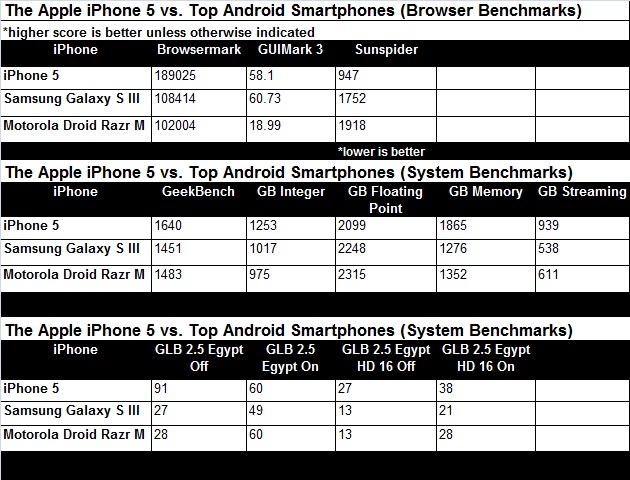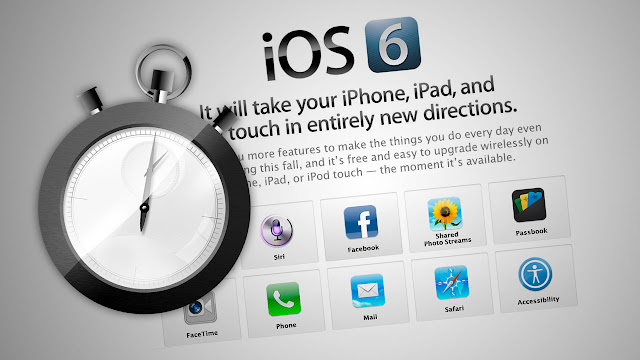The new unit looks just like the old one. It’s the same size and the same weight—I put two next to each other and they were difficult to tell apart except for the new Lightning port on the fourth-gen iPad’s bottom edge. The new iPad doesn’t need a smaller docking port—in fact, you could argue for a larger plug that’s better able to keep it in place in a dock —but Apple’s switching all of its iOS devices over to Lightning right now.
The difference is inside, in performance. The third-gen iPad had the odd A5X chip, which boosted the device’s GPU without accelerating its CPU at all over the iPad 2. The new iPad has an A6X, which appears to use the brand-new, Apple-designed processor found in Apple’s iPhone 5.
That means faster performance. I ran the browser benchmark Browsermark on the new iPad and got a score of 200,333. Compare that to the 126,886 on the previous iPad, and the 191,158 on the iPhone 5, and you see that we may have a significantly faster Web browsing experience here.
Apple also boosted the Wi-Fi speeds (invisible) and is offering it on more LTE networks, including Sprint’s (also invisible). The front camera has been upgraded to 1.2 megapixels. So you get the idea—what we have here is a completely familiar iPad with the same gorgeous high-res Retina screen and 275,000 apps, just faster and a bit better specced.
The new model rusticates the third-gen model, making it look like the formerly new iPad was a stopgap in Apple’s cadence of annual releases; perhaps the company was waiting for the A6 to be ready, but needed an iPad for its traditional spring unveiling. Fortunately for third-gen iPad owners, “better performance” is much less visible than “gorgeous Retina screen,” and with the iPad mini now in the running, developers will still be making sure their apps run well on A5 processors.
In other words, I didn’t see a huge difference between the fourth-gen iPad experience and that of third-gen iPad here at Apple’s event. That will change over time. The difference will be huge for people able to get the iPad on Sprint LTE, of course, and I suspect the faster Wi-Fi and faster processor will combine to create a notably faster Web-browsing experience. But we’ll have to see that when we do our full review.
Another New Apple iPad: The latest Apple iPad looks a lot like the last Apple iPad (a.k.a. the New Apple iPad), which was released mere months ago, and is now discontinued. The changes are mostly internal: a much faster processor, more 4G carriers, and a better front camera.
Apple iPad (4th Generation): Side – Apple didn’t mess with the design of its successful 9.7-inch iPad. It’s still 0.37 inches thick and works with existing cases and covers.
Apple iPad (4th Generation): Lightning Connector – Apple replaced the older 30-pin dock connector with the new, smaller Lightning port. The iPad doesn’t need to save the space, but Apple needs to nurture a world of Lightning accessories.
New (3rd-Gen) Apple iPad and Apple iPad (4th Generation): The third-generation iPad (at left) is no more. It’s been replaced by the nearly identical, but more powerful fourth-generation unit (at right).
New (3rd-Gen) Apple iPad and Apple iPad (4th Generation): Edges – The New Apple iPad (now discontinued) and the Apple iPad (4th Generation) seem thin until you compare them to the iPad mini. They’re still very handsome tablets.
New (3rd-Gen) Apple iPad and Apple iPad (4th Generation): Backs – Around back, the difference between these two iPads is just that our third-generation iPad is a cellular model, with the plastic antenna covers.
Apple iPad (4th Generation): Benchmark – This result probably isn’t valid, as it comes from an iPad that was being manhandled during the benchmark. But even with all that going on, its Web browsing performance beat the third-generation iPad (which scored 126,886) and the iPhone 5 (which scores around 191,000).












